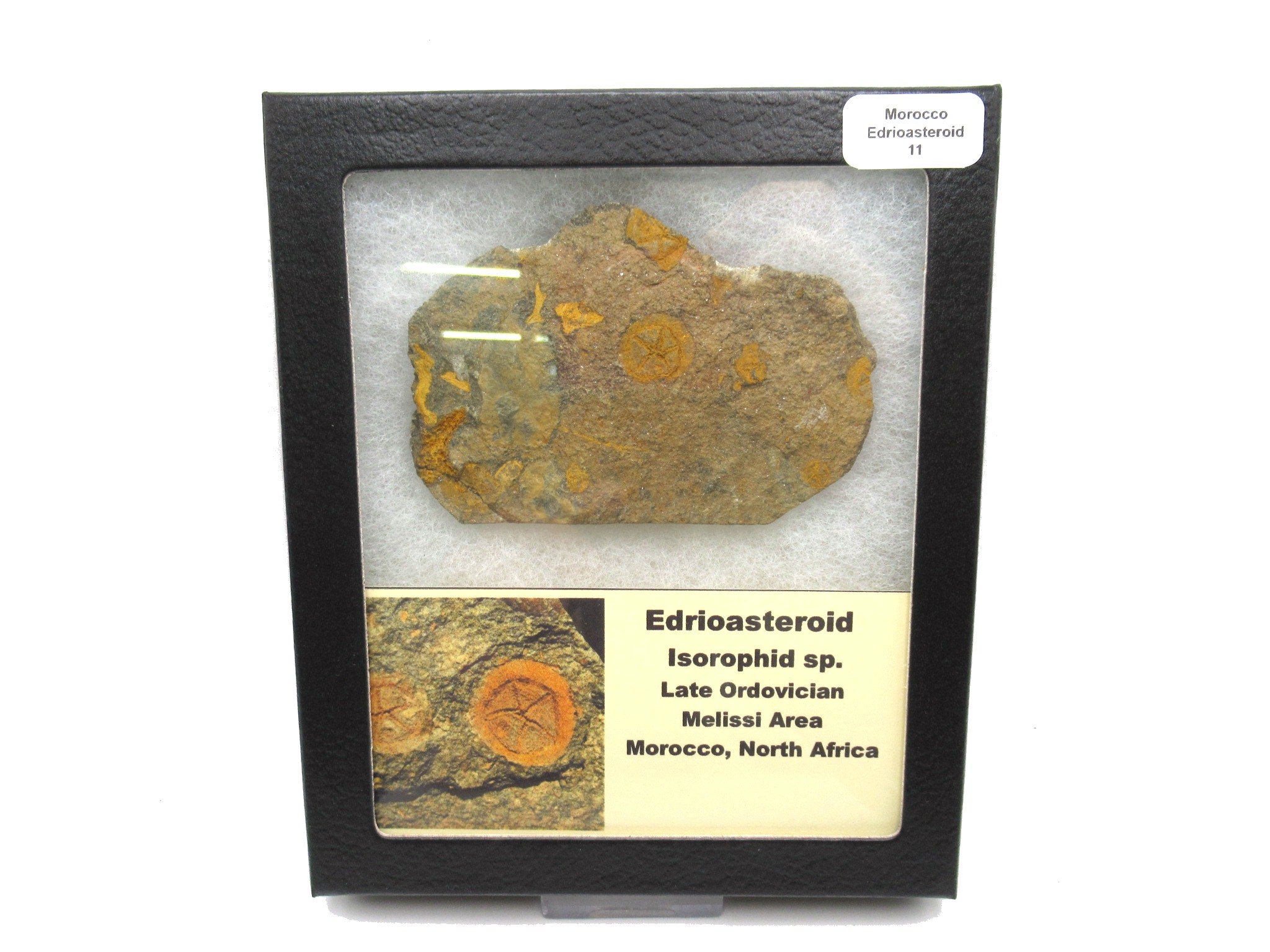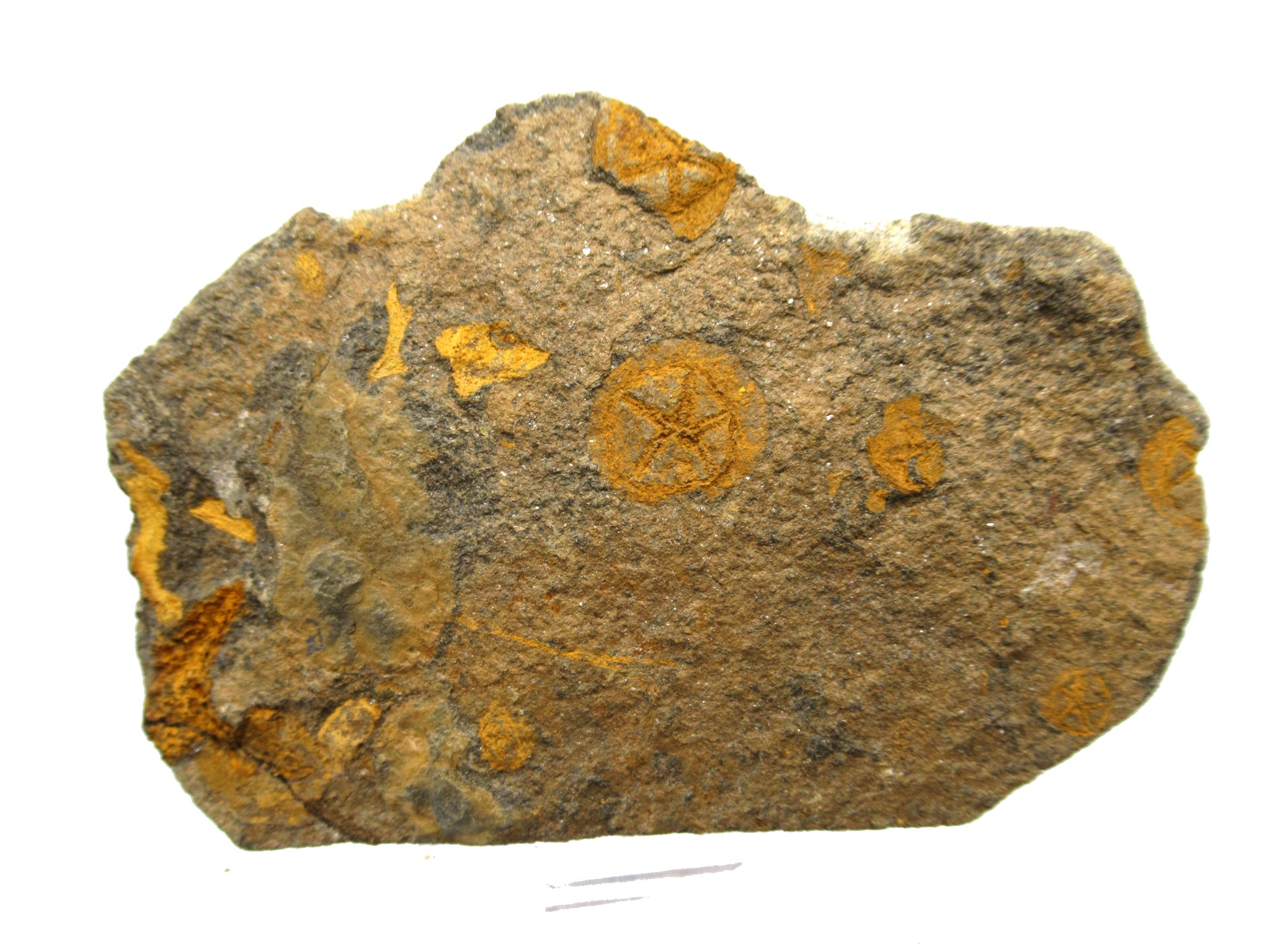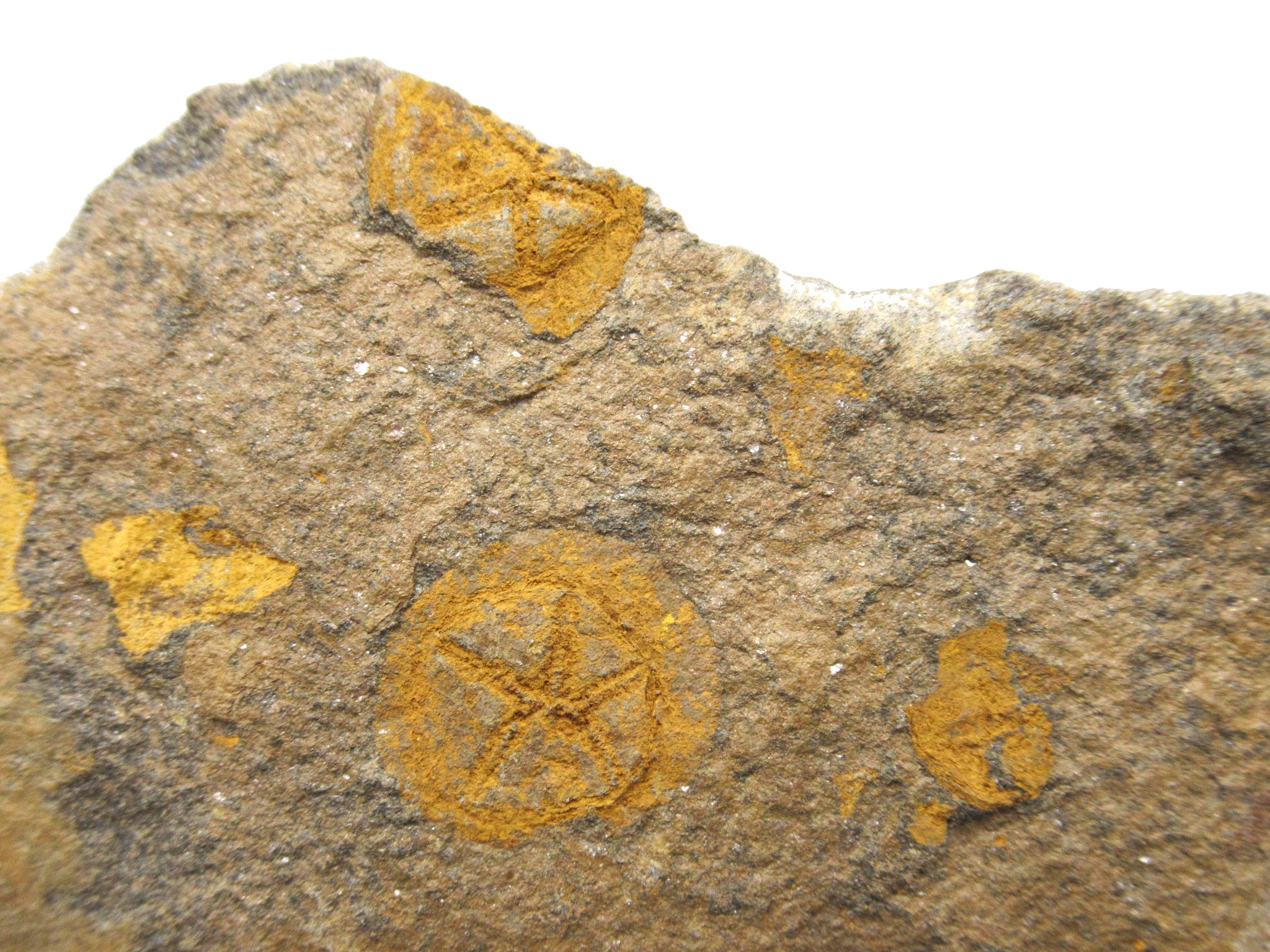Description
- Edrioasteroid – Isorophid sp.
- Late Ordovician
- Mecissi Area
- Morocco, North Africa
- The Matrix measures 3.65″ wide and will come in the 5.25″ x 6.25″ Riker Mount with Label as Shown
Edrioasteroidea is an extinct class of echinoderms. The living animal would have resembled a pentamerously symmetrical disc or cushion. They were obligate encrusters and attached themselves to inorganic or biologic hard substrates (frequently hardgrounds or brachiopods). The body plan for this class was simple: a main body (theca), composed of many small plates, with a peripheral rim for attachment, and (in some species) a pedunculate zone for extension and retraction. Circling and sometimes attached to the body was a peripheral rim of plates. The main feature consisted of five arms, or ambulacra, in the body wall radiating outwards from the central mouth. The ambulacra grew either curved or straight. When curved, they may all turn in the same direction or else one or two on the right side will curve opposite the others. The ambulacra are built of underlying floor plates that form the food groove and protective cover plates that roof the food groove. The anus was under the mouth region and was made of small triangular plates to form a cone-shaped area. The bottom surface of the theca is unplated.
Edrioasteroid species are distinguished by differences in the ambulacral curvature, the relationships of the cover plates, and ornamentation. The mode of life was sessile; they were often attached via a stalk made of small plates to a hard object such as a carbonate hardground or shell. Several examples of epibiotic attachment have also been noted.







